Disclosure: This article contains affiliate links. We may earn a commission from purchases at no extra cost to you, which helps our travel content.
Standing on the medieval Sint-Michielsbrug bridge at dusk, watching the amber glow of street lamps illuminate Ghent's three iconic towers, I can't help but feel the transformation beginning. By day, this Flemish gem is a living museum—Gothic spires and cobblestone streets that transport you centuries back in time. But as twilight descends, aquesta ciutat màgica (this magical city) undergoes a metamorphosis that few medieval destinations can rival. The ancient stone façades become dramatic backdrops for a thoroughly modern nightlife scene that blends Belgian beer culture, student energy, and Flemish joie de vivre into something utterly unique. Having explored nightlife from the neon-drenched casinos of Las Vegas to the alpine après-ski haunts of the Pyrenees, I can confidently say: Ghent after dark offers something special—a perfect alchemy where history and hedonism coexist in spectacular harmony. Grab your friends and follow me through the evening evolution of Belgium's best-kept secret.
The Golden Hour: Sunset Aperitifs with Medieval Views
The Ghentian evening begins not with a bang but with a gentle, golden transition. While tourists retreat to their hotels, locals emerge to reclaim their city, and savvy travelers (that's us) know to follow their lead.
My favorite ritual begins at the Graslei and Korenlei—the twin quaysides that frame the River Leie. These historic loading docks have transformed into what might be Europe's most spectacular waterfront promenade. As the setting sun bathes the guild houses in warm light, their stepped gable roofs create a fairytale silhouette against the darkening sky.
The true magic happens when these medieval facades reflect in the calm waters below, creating a mirror image that's nothing short of mesmerizing. It's what ecologists call an ecotone—a transition zone between two ecosystems—except here, it's a transition between day and night, history and modernity.
For the perfect aperitif experience, I recommend securing an outdoor table at Brasserie Bridge. Order a local Gruut beer (brewed right in Ghent with a medieval recipe that uses spices instead of hops) and their cheese croquettes. The combination of the crisp beer, creamy croquettes, and that golden-hour light on centuries-old architecture creates a sensory experience that epitomizes what makes European travel so magical.
Alternatively, do as the locals do: grab beers from a nearby shop and join the informal gathering along the quayside. This botellón style gathering (as we'd call it in Spain) lets you mingle with students from Ghent University, one of Europe's oldest academic institutions, who bring youthful energy to this ancient setting.
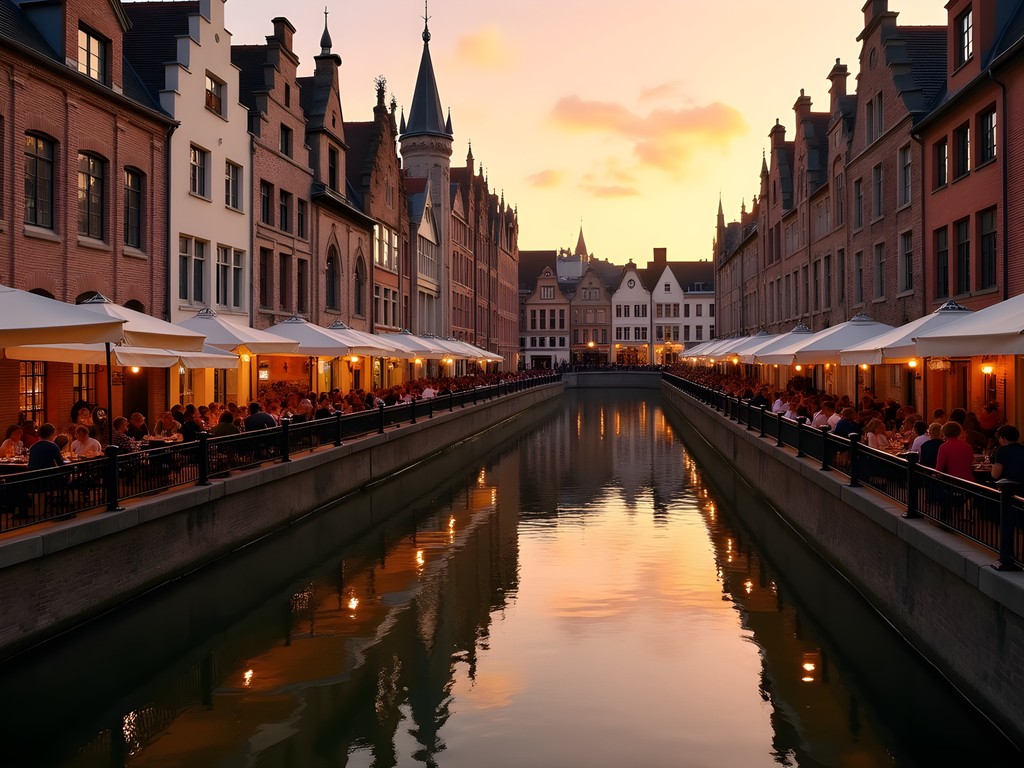
💡 Pro Tips
- Arrive around 30-45 minutes before sunset to secure prime seating at waterfront bars
- The Gruut Brewery offers five different beer varieties—try the amber for a balanced introduction to Belgian craft beer
- Pack a light jacket even in summer—the riverside location can get breezy after sundown
Beer Exploration: Beyond the Trappist Classics
While Belgium's beer reputation often revolves around Trappist monasteries and centuries-old brewing traditions, Ghent has emerged as the country's craft beer revolutionary. The city offers the perfect blend of reverence for tradition and appetite for innovation.
My scientific background draws me to Gruut Stadsbrouwerij, a brewery that fascinates from both cultural and biochemical perspectives. Owner Annick De Splenter revived the medieval practice of brewing with gruut (a herb mixture) instead of hops. This isn't just historical novelty—it creates distinctly different flavor compounds through alternative biochemical pathways during fermentation. The brewery's industrial-chic tasting room offers flights that let you taste the spectrum of possibilities.
For a more comprehensive beer journey, De Dulle Griet on Vrijdagmarkt square is my go-to recommendation. Named after a medieval cannon (which locals nicknamed "Mad Meg"), this brown café houses over 500 Belgian beers. The ritual for ordering their house specialty, Max of the House (served in a distinctive coachman's glass), requires surrendering one of your shoes as a deposit—they're hoisted up in a basket to the ceiling until you return your glass!
Before heading out, I always pack my beer journal to record tasting notes. After sampling dozens of Belgian varieties, the flavor profiles start to blur together, and having a dedicated space to document your discoveries makes the experience more meaningful.
For serious beer enthusiasts, consider timing your visit with the annual Gentse Bierfestival in August, where over 100 breweries showcase their creations in the historic setting of the Monastery of the Augustinians. It's a fascinating intersection of religious architectural heritage and Belgium's secular brewing tradition—something I find particularly interesting given how many brewing techniques were originally developed by religious orders.
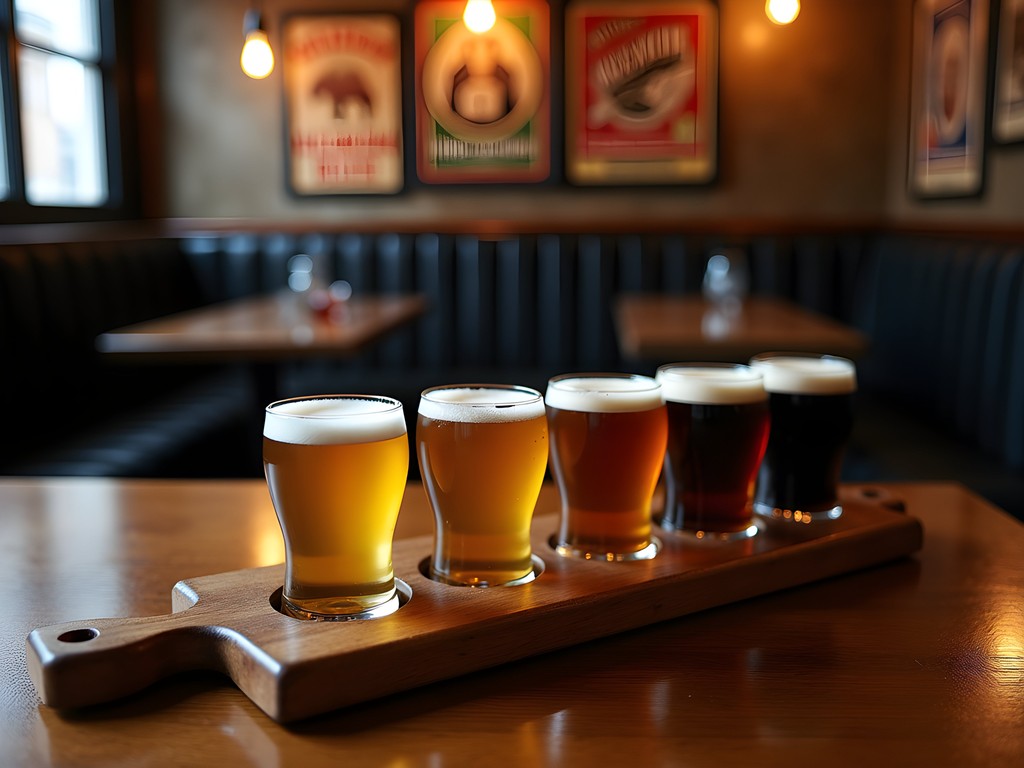
💡 Pro Tips
- At De Dulle Griet, wear shoes you don't mind parting with temporarily when ordering the Max beer
- Visit Trollekelder near St. Jacob's Church for their rotating taps featuring seasonal Belgian specialties
- Download the Untappd app to track your beer discoveries and find top-rated brews near your location
Underground Scene: Patershol's Hidden Nightlife
As a cave explorer by passion, I'm naturally drawn to what lies beneath the surface—both literally and figuratively. In Ghent, the Patershol district satisfies that craving for discovery. This medieval quarter, once home to leather workers and now Ghent's bohemian heart, houses some of the city's most intriguing nightlife options hidden within its narrow, winding streets.
The labyrinthine layout of Patershol reminds me of exploring karst systems in the Pyrenees—each turn reveals something unexpected. The district's name translates to "cave of the fathers," referring to the Carmelite monastery that once stood here. Today, it's a different kind of spiritual experience that draws visitors after dark.
Hot Club de Gand represents everything I love about European jazz clubs—intimate, smoky (though now just in atmosphere, not actually smoke-filled), and authentically dedicated to the craft. The basement venue channels 1930s Paris with live jazz several nights weekly. The acoustics in this underground space are remarkable—the stone walls create natural reverberations that modern venues spend thousands trying to replicate.
For cocktail aficionados, Jigger's offers an experience that balances scientific precision with artistic flair. Hidden behind an unassuming façade, this speakeasy-style bar approaches mixology with the same methodical care my conservation colleagues apply to field research. The seasonal menu often incorporates foraged local ingredients and house-made infusions. Their signature drink, the Ghent Mule, substitutes traditional ginger beer with a house-fermented version using a SCOBY culture—a fascinating application of controlled microbial ecosystems.
To navigate Patershol's winding streets after dark, I rely on my pocket flashlight. After years of cave exploration, I never travel without a reliable light source, and this compact model provides impressive illumination while barely taking up pocket space. It's proven invaluable for reading menus in dimly lit bars and navigating the cobblestone alleys between venues.
"Quan la nit cau, els secrets surten" as we say in Catalan—when night falls, secrets emerge. This couldn't be truer than in Patershol, where the most memorable experiences often happen in venues you stumble upon rather than seek out.

💡 Pro Tips
- Make reservations for Hot Club de Gand on weekend nights as the intimate space fills quickly
- At Jigger's, ask the bartender to create something based on your flavor preferences rather than ordering from the menu
- The narrow streets of Patershol form a maze—drop a pin on your map app at your accommodation before heading out
Student Energy: Where Locals and Travelers Converge
Ghent houses over 75,000 university students within a relatively compact city center—creating a population density of young energy that rivals Barcelona's Gothic Quarter during festival season. This academic presence infuses the nightlife with an intellectual vibrancy and affordability that's increasingly rare in Western European destinations.
The Overpoort district serves as Ghent's dedicated student party zone—a single street packed with over 40 bars catering primarily to the university crowd. As someone who studies ecological systems, I find it fascinating how this concentrated nightlife corridor creates a sustainable model: by containing most late-night activity to one area, the rest of the historic center can maintain its medieval charm without excessive noise or disruption.
My personal favorite in this area is Porter House, a multi-level bar with different music on each floor. The basement level features an impressive collection of board games that catalyze interactions between travelers and locals—I've formed friendships over heated Settlers of Catan matches that led to impromptu city tours the following day.
For a more alternative experience, Charlatan on Vlasmarkt offers three distinct spaces: a concert venue for live music, a club area with DJs, and a café for conversation. The programming emphasizes emerging artists and experimental sounds rather than commercial hits. The crowd represents a fascinating cross-section of Ghent's creative ecosystem—art students, young professionals, and visiting researchers all converging in one space.
To fully embrace the student nightlife experience, I always pack my water bottle. Between dancing and navigating the sometimes overheated venues, staying hydrated is essential. This insulated bottle keeps water cold all night and has survived countless adventures from Patagonian hiking trails to Ghent's dance floors.
What makes Ghent's student scene special is its integration with the city's historical identity. Unlike purpose-built entertainment districts that could exist anywhere, these venues occupy buildings with centuries of history—creating a unique juxtaposition of contemporary energy within medieval architecture. It's reminiscent of how natural ecosystems evolve and adapt while maintaining their core structure—something I find endlessly fascinating both professionally and personally.
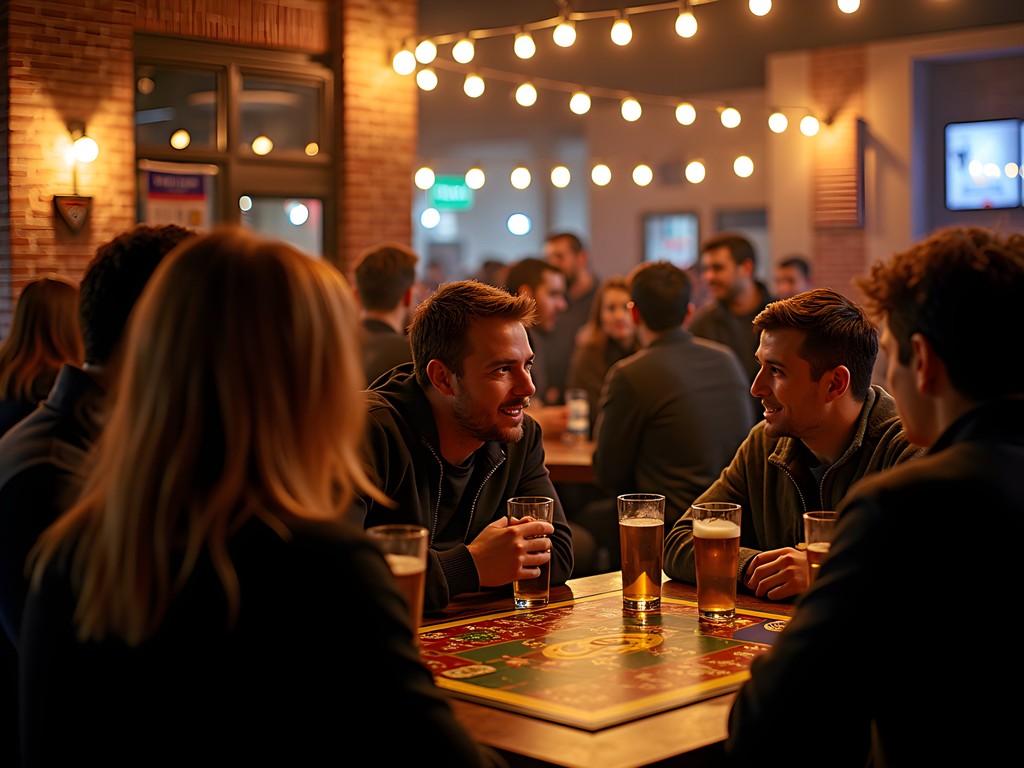
💡 Pro Tips
- Visit Overpoort on a Thursday for the authentic student experience—this is the traditional party night for Ghent University students
- Many student bars offer happy hour specials between 9-11pm
- The red-light district borders some student areas—be aware of your surroundings when walking between venues late at night
Late-Night Cultural Immersion: Festivals and Special Events
While Ghent offers reliable nightlife year-round, the city truly reveals its character during its cultural festivals—when the medieval architecture becomes more than just a backdrop but an active participant in the experience. Having documented how tourism impacts cultural preservation across four continents, I'm particularly impressed by how Ghent uses its nighttime events to connect visitors with local heritage in sustainable ways.
The crown jewel is undoubtedly the Gentse Feesten (Ghent Festival), a 10-day celebration each July that transforms the entire city center into what might be Europe's most spectacular open-air cultural event. Dating back to 1843, this festival combines traditional Flemish elements with contemporary arts across 14 different squares, each with its own programming and atmosphere.
What makes the Gentse Feesten special from an ecological perspective is how it distributes visitor impact across multiple sites—preventing the overtourism damage that concentrated events can cause to historic infrastructure. The festival operates on a remarkable system of free admission to most events, with the city instead generating revenue through regulated food and beverage sales.
Outside festival season, Ghent Light Festival (held every three years) uses cutting-edge projection mapping to transform the medieval facades into massive canvases for light artists. Walking through the city during this event reminds me of exploring bioluminescent cave systems—that same sense of familiar structures revealed in an entirely new light.
For photography enthusiasts, these nighttime cultural events present unique technical challenges. I've found my travel tripod invaluable for capturing the light installations and illuminated architecture without blur. Its compact design makes it practical to carry throughout an evening of exploration, unlike bulkier professional models.
What fascinates me as a conservation scientist is how these events have become crucial to the city's cultural ecosystem. Rather than treating its medieval heritage as a museum piece to be preserved in amber, Ghent uses these nighttime cultural programs to keep traditions alive through active participation. It's a living example of what we call "adaptive reuse" in conservation—finding new purposes for historical resources that ensure their continued relevance and protection.
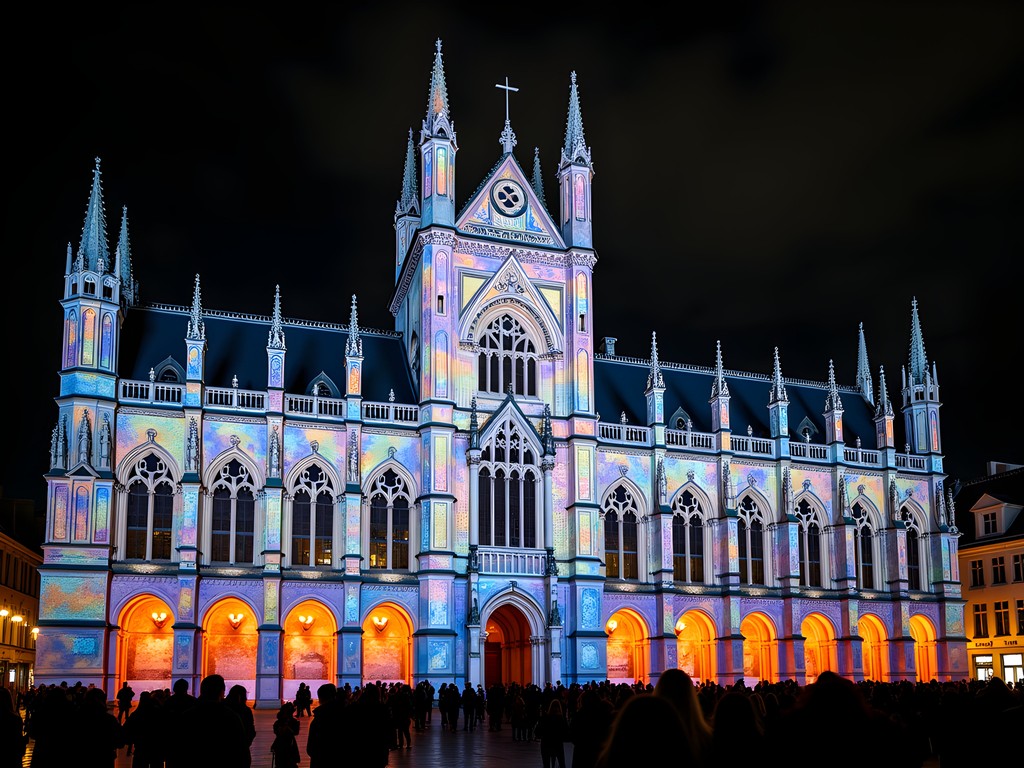
💡 Pro Tips
- Book accommodation at least 6 months in advance if visiting during Gentse Feesten in July
- The Light Festival route gets extremely crowded—visit on a weeknight and start at the furthest point from the center to avoid the worst congestion
- Many museums offer special evening hours during festivals—a perfect opportunity to see major attractions without daytime crowds
Dawn Patrol: The Magical Hour After Everything Closes
My most treasured Ghent experiences have come during that magical transition between nightlife and daybreak—when the last bars close but the sun hasn't yet risen. This liminal space, typically between 3:30-5:30am depending on the season, offers a rare opportunity to experience the medieval city in perfect solitude.
As a conservation scientist accustomed to early-morning wildlife monitoring, I've developed a habit of what winter sports enthusiasts call "dawn patrol"—being the first one out to experience pristine conditions. In Ghent, this means emerging from your final venue and intentionally taking the long way home.
The Gravensteen Castle takes on an entirely different character in these pre-dawn hours. Without daytime crowds, you can appreciate how this 12th-century fortress dominates the cityscape—its reflection in the surrounding moat undisturbed by tour boats or passing pedestrians. The strategic defensive positioning becomes immediately apparent when viewed in isolation—something easily missed during busy hours.
For the perfect conclusion to a night out, make your way to the St. Michael's Bridge just before sunrise. From this vantage point, you can watch the first light illuminate Ghent's famous three towers—St. Nicholas' Church, the Belfry, and St. Bavo's Cathedral—in succession as the sun clears the horizon. The way the light interacts with the ancient stone reminds me of how sunlight penetrates the entrance chambers of cave systems, revealing textures and colors invisible in flat midday light.
During these early hours, Ghent's famous canal system takes on the stillness of a mountain lake. The perfect reflections create what photographers call the "blue moment"—when the ambient light balances perfectly with any remaining artificial illumination.
To capture these fleeting moments, I rely on my camera stabilizer which ensures smooth video footage even when walking. These pre-dawn scenes deserve more than static photos, and the 3-axis stabilization lets me create cinematic movement shots without professional equipment.
"El silenci també parla"—silence also speaks—as my Catalan grandmother would say. In these quiet moments, Ghent reveals secrets impossible to discover during its more animated hours.
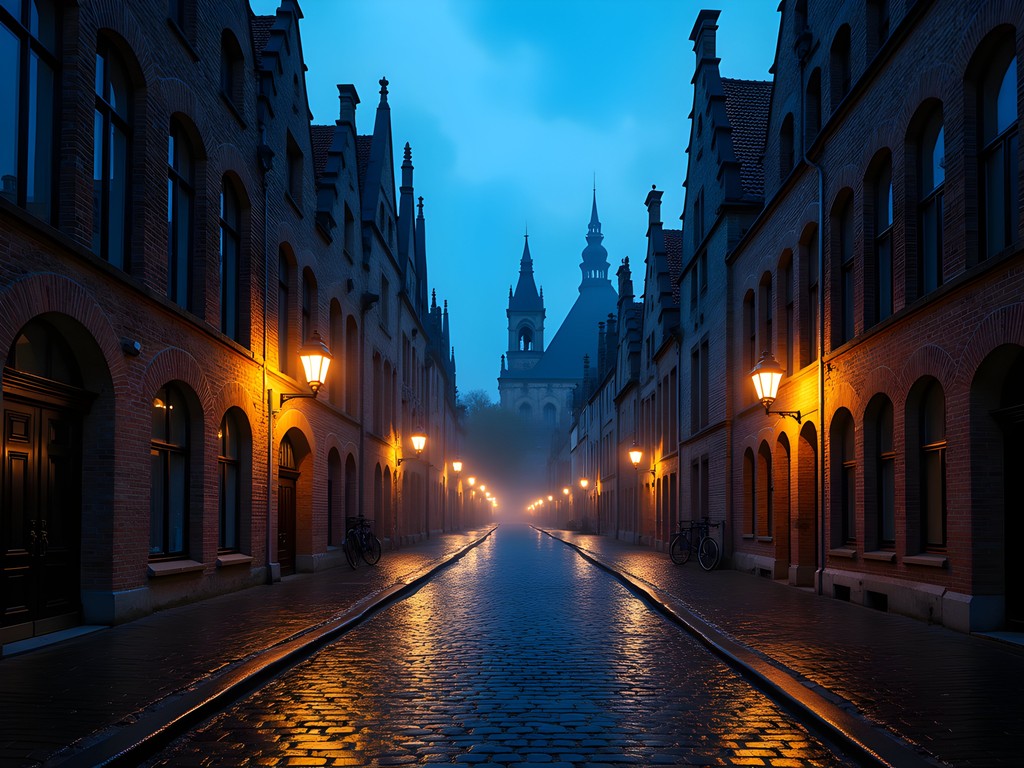
💡 Pro Tips
- The night bus system (Nachtnet) runs limited routes on weekends—download the De Lijn app to check schedules
- Bring a light jacket even in summer—temperatures drop significantly in pre-dawn hours
- Several bakeries open at 5am—follow your nose to find fresh pastries as a perfect nightcap
Final Thoughts
As the morning light fully claims Ghent and the city transitions back to its daytime persona, I find myself reflecting on the unique duality this medieval wonder offers after dark. Unlike many European destinations where nightlife feels disconnected from historical identity, Ghent achieves a remarkable synthesis—where centuries-old architecture doesn't just survive alongside modern energy but actively enhances it. The medieval stonework that witnessed plagues and revolutions now frames dance floors and cocktail bars with equal dignity.
This harmonious coexistence reminds me of balanced ecosystems where each element serves multiple functions. Much like a keystone species that supports countless others, Ghent's architectural heritage provides both physical and emotional scaffolding for contemporary experiences. It's a model other historic cities would be wise to study.
Fins la propera aventura, amics—until the next adventure, friends. Whether you seek cultural immersion, Belgian beer exploration, or simply the magic of medieval streets after midnight, Ghent after dark awaits with experiences that will linger in your memory long after you've returned home.
✨ Key Takeaways
- Ghent offers a uniquely integrated nightlife experience where medieval architecture enhances rather than conflicts with modern entertainment
- The student population creates an energetic yet affordable nightlife scene accessible to travelers on mid-range budgets
- Timing your visit with cultural festivals like Gentse Feesten provides the richest nighttime experiences
- The pre-dawn hours offer a magical opportunity to experience the medieval city in solitude
- Belgian beer culture forms the foundation of Ghent's nightlife, with options ranging from traditional brown cafés to cutting-edge craft breweries
📋 Practical Information
Best Time to Visit
Year-round, with July offering festival experiences and December-February showcasing winter light installations
Budget Estimate
€70-120 per person per day including accommodation, food, drinks and activities
Recommended Duration
2-3 nights minimum to experience the full nightlife cycle
Difficulty Level
Easy
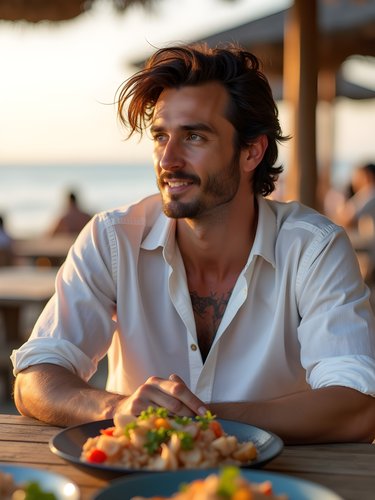
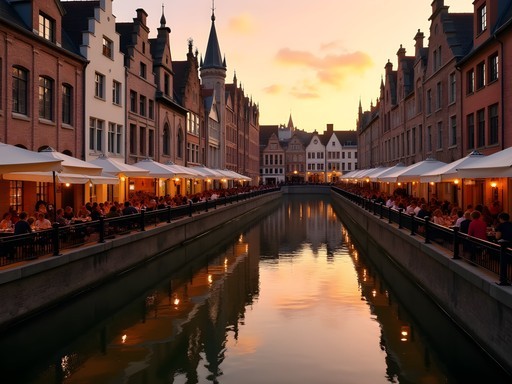
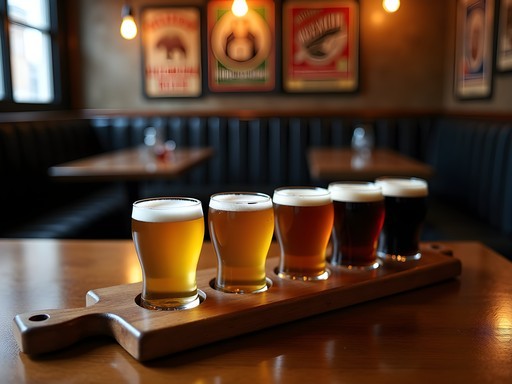
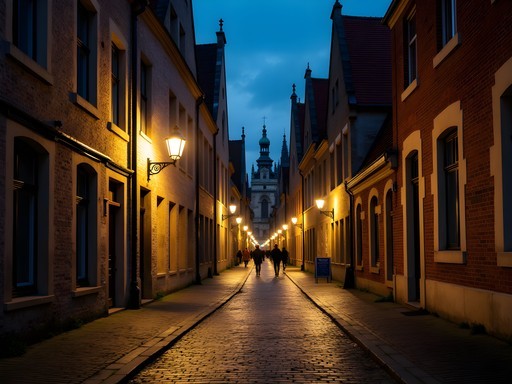
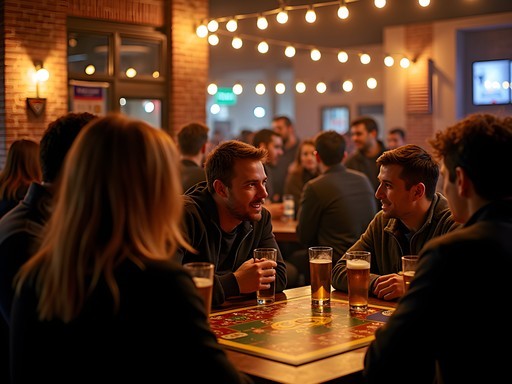
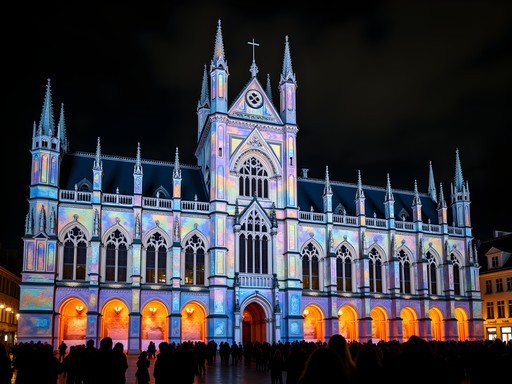
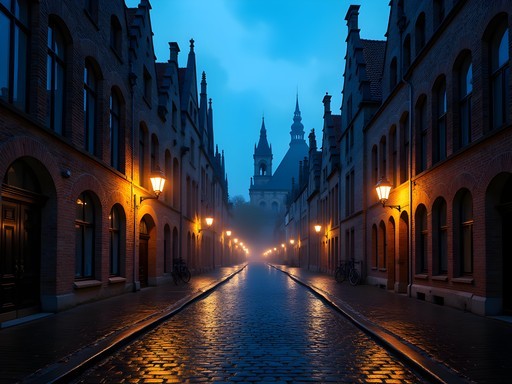


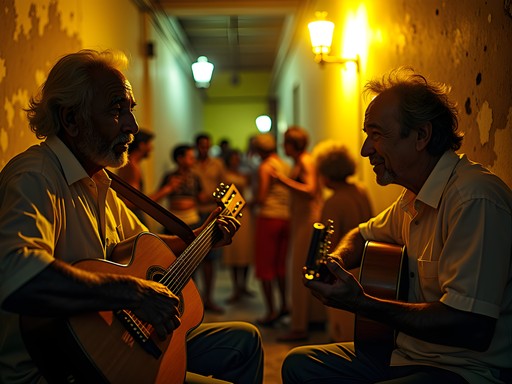
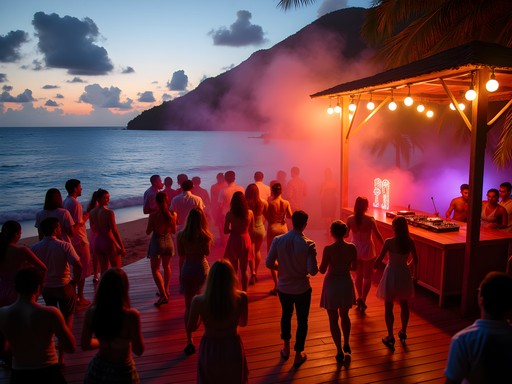
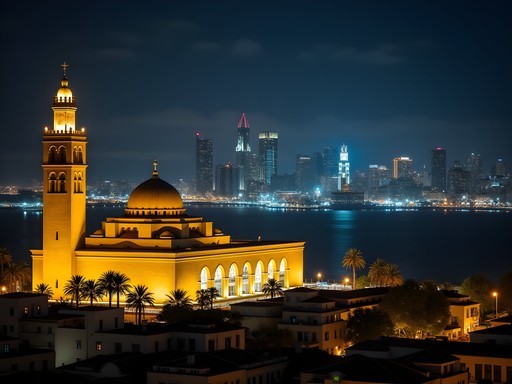
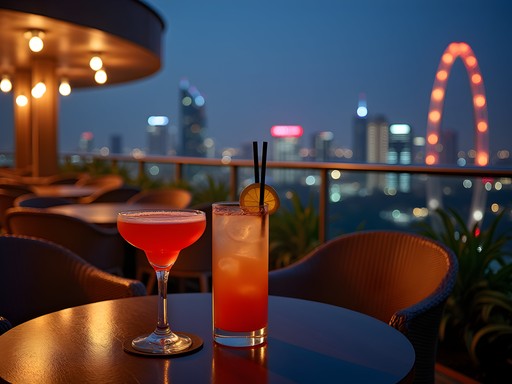
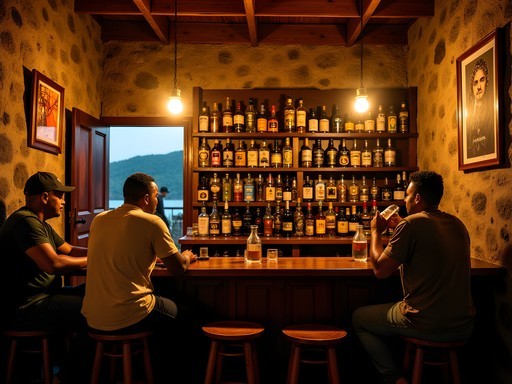



Comments
Casey Andersson
Just got back from Ghent and this post was spot on! The sunset view from Sint-Michielsbrug is magical. We started our evening with aperitifs at Bar Jan Cremer and then explored the student area around Overpoort. The contrast between medieval architecture and buzzing nightlife is what makes Ghent so special. One tip I'd add - don't miss the night view from Gravensteen castle area. Also, we found a fantastic speakeasy-style bar called Jigger's not mentioned here. You need to ring a doorbell to enter, and they make the most incredible craft cocktails! I used my pocket guidebook which had a great nightlife section with maps that helped navigate the medieval streets after dark. Alexander, thanks for highlighting the duality of this amazing city!
moonlover
Jigger's sounds amazing! Adding it to my list for next month. Did you need reservations?
Casey Andersson
Yes, definitely make reservations for Jigger's! We got lucky with a cancellation, but it's small and fills up quickly, especially on weekends. Their website has an online booking system.
moonlover
Any specific bars in Patershol you'd recommend? The 'hidden nightlife' part has me intrigued!
Alexander Tucker
Hey moonlover! In Patershol, don't miss Het Waterhuis aan de Bierkant - amazing beer selection right by the canal. For something more intimate, try De Alchemist for craft cocktails. And if you want to meet locals, Hot Club de Gand is a tiny jazz bar with incredible atmosphere!
starmaster
Great post! How safe is Ghent at night for solo travelers? Planning to visit this fall.
Casey Andersson
I found Ghent incredibly safe at night! The main areas like Korenmarkt and around Graslei/Korenlei are well-lit and full of people until late. Even the smaller streets in the historic center felt secure. Just use standard city precautions and you'll have a wonderful time!
starmaster
Thanks Casey! That's reassuring. Can't wait to check out some of those beer spots mentioned in the article.
Sage Dixon
Alexander, you've captured the magical duality of Ghent perfectly! I was there during a festival last year and was blown away by how the medieval architecture creates this incredible backdrop for modern nightlife. For anyone planning a visit, I'd add that taking a night canal cruise gives you a completely different perspective of the city. The reflections of the illuminated buildings on the water are mesmerizing! Also, don't miss Gruut brewery - they make beer with herbs instead of hops using medieval techniques. I documented the whole experience with my travel camera which handles low light situations amazingly well. The contrast between ancient stones and lively bars makes Ghent one of Europe's most photogenic night cities.
Alexander Tucker
Thanks Sage! Great tip about the night canal cruise - I missed that on my visit. Definitely adding it to my itinerary for next time. And yes, Gruut is fantastic - their herb-based brewing approach is fascinating.
wanderphotographer
Just looked up some night canal photos of Ghent and wow! Definitely adding this to my must-do list for my trip.
Megan Martin
Having visited Ghent multiple times for business over the past few years, I can attest to the city's remarkable evening atmosphere. What I particularly appreciate about Alexander's article is the focus on the transition period - that golden hour when the city shifts from tourist destination to local playground. For business travelers with limited free time, this is precisely when you want to be out exploring. The Graslei and Korenlei areas offer excellent networking opportunities in a relaxed setting, with several upscale wine bars that are perfect for client meetings. I've found Ghent to be an excellent alternative to Brussels for business travel in Belgium - more intimate, equally well-connected, and with a charm that consistently impresses international colleagues. The city's compact nature means you can easily fit in cultural experiences even around a busy meeting schedule.
Frank Garcia
Alexander's description of Ghent's transformation from day to night is spot on. What's fascinating from an urban development perspective is how Ghent has managed to preserve its medieval character while fostering such a vibrant modern nightlife. I spent three weeks backpacking through Belgium last year, and Ghent stood out precisely because of this duality. The student population from the university provides constant energy, while the historic architecture creates this surreal backdrop. If you're into craft beer beyond the traditional Trappist varieties, the microbrewery scene is exploding there. I documented the evolution of Ghent's beer culture on my blog - the shift from traditional to experimental brewing mirrors the city's own balance between historic and contemporary.
hikingexplorer
Is it easy to get around at night? Are there taxis or is it walkable from the center to these nightlife areas?
Frank Garcia
I found Ghent to be extremely walkable, even late at night. The historic center is compact, and most of the bars and nightlife spots are within a 15-20 minute walk of each other. The lighting along the canals makes nighttime navigation pretty straightforward. There are taxis and Ubers available, but honestly, the late-night walks through the medieval streets were highlights of my trip. Just be aware that some of the cobblestone streets can be a bit tricky after a few Belgian beers!
wanderluststar
Been to Ghent twice but never experienced the nightlife! Need to go back!
winterdiver6654
Just got back from Ghent last week and can confirm everything in this post! We stumbled upon this tiny bar called 'Het Waterhuis aan de Bierkant' right by the canal and ended up spending hours there trying different Belgian beers. The bartender was giving us the history behind each one. Also, those late-night waffle stands are dangerous - we went back three nights in a row! The student energy definitely gives the medieval setting a unique vibe.
greenpro
Het Waterhuis is on my list now! Did you need reservations anywhere or is it pretty easy to get into places?
winterdiver6654
Most bars were walk-in friendly, but restaurants definitely needed bookings, especially on weekends. The popular spots near Graslei fill up fast!
wildchamp
The Patershol district is such a hidden gem! We stayed in an Airbnb there last summer and loved being able to wander home through those medieval streets after a night out. One tip for anyone visiting - grab a pocket guidebook because the most interesting bars are tucked away in the smallest alleys. Also, don't miss the view from the Gravensteen castle right before sunset - you can see the whole city transitioning into evening mode with all the lights coming on. Magical!
Venture X
Premium card with 2X miles, $300 travel credit, Priority Pass